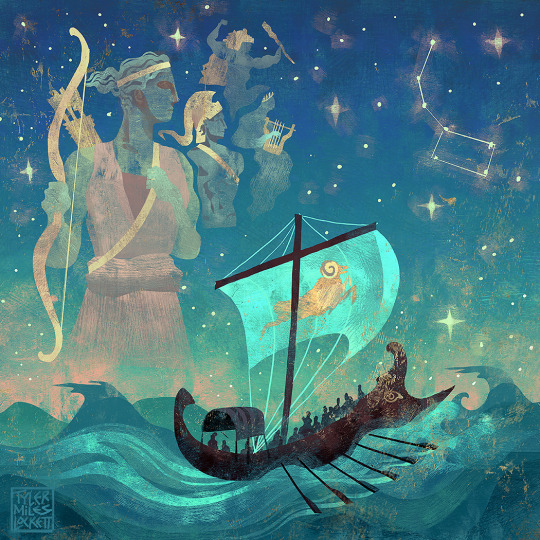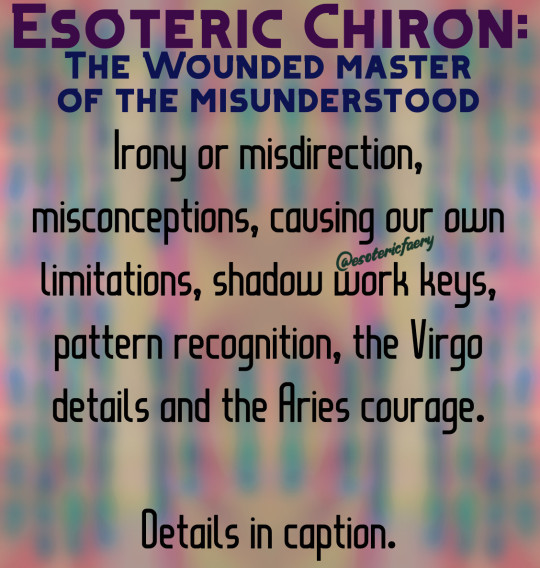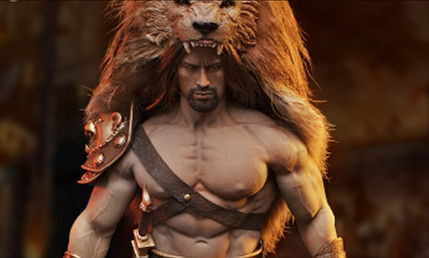#Argonaut Cycles
Text

"Atalanta and the Argonauts" (#5)
When the call went out to Greece’s greatest heroes, for fame and glory, to join Jason and his quest for the Golden fleece, only the bravest answered the call. Heroes like Hercules, Orpheus, Telamon, Peleus, and yes, Atalanta mustered her courage and journeyed to join them.
Appollonius of Rhodes wrote the epic poem “Argonautica” about Jason’s quest for the golden fleece around the 3rd century B.C. based on a much older tale, (referenced in Homer and Pindar). Apparently Appollonius elevated the romantic relationship between Jason and Medea, which in turn inspired latin poetry and Virgil’s Aeneid. In Appollonius tale, Atalanta shows up to join the Argonauts, but Jason turns her away, fearing having such a beautiful woman on board would cause conflict between his men. However, In Appollodorus “Library” (1-2nd century A.D.) he lists Atalanta as being one of the heroes who accompany Jason for the Golden fleece. Unfortunately, there are no surviving versions where we see the entirety of the journey with Atalanta involved, which begs the question; what would the adventure be like if Atalanta joined?
On the topic of sea quests, lets take a quick look at ancient Greek seafaring. The Argo ship is portrayed as a sort of Trireme (ancient warship with three rows of oars and curved prow). Developments in astronomy helped ancient sea sailors navigate through constellations like Ursa Minor (little dipper) , as well as moon cycles and eclipses. They also used “sounding weights” to measure sea depths, which helped to inform distances to land. There is evidence from around 100 B.C. of an ancient “Orrery” (solar model) tool for celestial navigation called the Antikythera Mechanism. This ingenious, hand-powered device contained gears and could predict and track astronomical positions and eclipses.
Like this art? It will be in my illustrated book with over 130 other full page illustrations coming in Aug/Sept to kickstarter. to get unseen free hi-hes art subscribe to my email newsletter
Follow my backerkit kickstarter notification page.
Thank you for supporting independent artists! 🤘❤️🏛😁
#greekmythology#greekgods#pjo#mythology#classics#classicscommunity#myths#ancientgreece#argonauts#goldenfleece
65 notes
·
View notes
Note
Hi! Since you seem to know a lot about mythology, would you have any recommendations on how to learn about it more and more in depth? Any sources that you would suggest for someone interested in learning more about it?
Uhhh probably depends on where you want to focus on avshsv
There are a lot of different authors/poets over the years that pumped out literary works on it. I'm into the epic cycle and the trojan war, so I mainly read homer, and then I'm planning to read other poems written about it by Sophocles, Euripides, Virgil, maybe Ovid? There are pretty nifty books that compile information too. If I remember correctly, Stephen fry has one? The mythology is massive, so I recommend doing it a bit at a time (titanomachy, Jason and the argonauts, the whole thing with the labyrinth, trojan war, etc), and then looking up any poems/stories attached to it
#wolfy tedtalks#anon#maybe#im still pretty new to this so i might be wrong AGSJSBS#i jusy find it let overwhelming that way
120 notes
·
View notes
Note
I've heard there's a medieval "Penthesilead" Cycle. Do you have anything to recommend or suggest?
Do you mean the Posthomerica? I’ve seen the part about her called the Penthesilead before. If not than I hadn’t heard of that one!
In terms of Greek Mythology?
The Theogony is an obvious one but in terms of Hesiod, his Catalogue of Women tends to get forgotten but what we have of it is really interesting for mythological women.
Orphic and Homeric Hymns are good smaller ones that give variations in myth and worship. Also like the Hymns of Callimachus (Bath of Pallas shoutout!) and Pindar. Also Apollodorus
The Argonautica is a personal fav of mine and in terms of Latin literature, Hyginus Fabulae is good.
In terms of plays I can always recommend the Oresteia and Theban Trilogy. Also Ajax and Electra by Sophocles. And Medea obviously.
Theoi.com has a lot of the Epic Cycle fragments listed there. https://www.theoi.com/Text/EpicCycle.html
Medieval wise, I’m honestly not sure. I do want to find more medieval literature focused of Greek myth though.
The Menelaid by John Barth is relatively modern but I really like it. Jason and the Argonauts (1963) is probably my fav Greek Myth movie. Also a bunch of Irene Papas movies (Electra, Iphigenia, Trojan Women, The Odyssey).
Also super modern but I’ve been getting into Epic the Musical recently.
Sorry, list went of bit off the rails 😅 but I hope it was somewhat helpful
#a lot of these a pretty known but I’ll have to think more to come up with a good list of lesser known ones#also didn’t put iliad and odyssey up here cause those are obvious#but like I would still recommend them#there’s also so much fragmentary stuff I tried to stick to things with more than like 5 lines#hope this is something#gawrkin
11 notes
·
View notes
Text
Golden Fleece Glittering in the Sky
There’s an old phrase “all that glitters is not gold” from William Shakespear. The phrase meant to point out that outward appearances don’t always mean the true value of the item or person. Throughout history and myths gold is used to represent the eternal, unending, incorruptible, and embracing the powers of the divine. Sif, goddess of fertility and the harvest, had hair of gold that was so coveted by the gods. As a prank, Loki cut the golden locs from her head and they grew back black as night. Golden apples granted youth to the gods and goddesses in Norse Mythology as well. Olympus was a series of palaces made of marble and gold. Anything gold was deemed divine, and so there was always a bit of demand for gold. The color of gold even still is associated with the sun, and this is where we start with the story.
Many generations ago, the gods were present in all aspects of life. Hestia looking after the hearth and home, Athena guiding wartime strategies and knowledge, Hades judging the dead and keeping the underworld contained, Persephone aiding her husband and providing spring and bountiful harvests, and so many more. Poseidon, god of the sea, found a granddaughter of Helios, the titan of the sun, and took her as his consort. Using his divine abilities, he transformed them both into sheep so that her suitors could not find her as the god had his way with his mistress. She bore a son, a ram with glittering fleece of gold that glittered in the sun. He was named Chrysomallos, and he had wings that could carry him great distances. This golden fleeced, winged ram would bring salvation, joy, and death to individuals in its lifetime.

A cloud nymph who was made by Zeus in the image of Hera to trick a lustful guest at one of his feasts, Nephele was indeed beautiful. Her beauty allowed her to marry King Athamas and together they had twins, a boy named Phrixus and a girl named Helle. After a few years, Athamas grew tired of Nephele and sent her away, marrying another woman, Ino, instead. Ino hated her step-children and vowed to get rid of them somehow. So she devised a plot to get the king to slaughter his own son as a “sacrifice to the gods”. She roasted all the seeds meant to be planted, making sure they would not sprout. Then when the citizens went to the oracle, Ino bribed the men who made the trip to tell the rest of the people that Phrixus needed to be sacrificed. Nephele watched as her son was about to be slaughtered and she sent the winged ram Chrysomallos to save her children. The ram descended and picked up Phrixus and Helle before making his way back to his home. However, on the journey, somehow Helle fell from Chrysomallos’s back and died when she drowned in the water. The place that she fell became known as Hellespont, now called Dardanelles or the Strait of Gallipoli. Phrixus on the other hand, safely made it away from Athamas and Ino, as Chrysomallos spoke words of encouragement to him as they fled. When they were finally safe, in what’s now modern day Georgia, on the eastern most coast of the Black Sea, Phrixus sacrificed Chrysomallos to the gods, sending him back to his father, Poseidon. Poseidon put the ram into the sky as the constellation Aries so that all would know they would be watched over. Phrixus gave the golden fleece to a king in exchange for the hand of his daughter. That king would put it in a sacred garden of Ares, where Jason and the Argonauts would try and retrieve the item.
Aries season starts the zodiac cycle as it begins on the Vernal Equinox. Astronomical Spring, March 21st, begins the springtime season and is one of two days that is equal daylight and darkness. From March 21st to April 19th, Aries get their time to shine. They are the cardinal fire sign, the very first fire sign in the zodiac. This makes their temperament very dominant. Aries usually have a lot of problems with the head as that is their body part and they are ruled by the planet Mars. Aries are prone to headaches when there is too much energy around and they’re known for great drive in starting tasks and projects, but not at the followthrough and completion. Aries are known for their mantra of “I Am” as they view themselves as highly important and first in all things. For those who are great with the completion but not starting tasks, having an Aries in your life is the best thing. They will make sure you know how to do what needs to be done and then they will start helping, but leave you to finish it all up which is just the way you like it. Aries can be courageous, determined, confident, optimistic, passionate, enthusiastic, and bluntly honest when you look at them completely. On the flip side, they’re known for being impatient, moody, impulsive, short-tempered, and even aggressive on some occasions. The best thing for Aries when you get one in your life are to make sure they have comfy clothes, a leadership role of some kind, that they can engage in physical challenges, and that they can play individual sports like tennis. The things to never let happen with an Aries are inactivity, delays, and giving them work that doesn’t use their talents.

Aries people get along best with Leos and Libras and their lucky colors are red and mustard. The luckiest numbers are one, eight, and seventeen. Aries usually have their best days on Tuesdays and they align with the tarot card, the Emperor. This soap, colored with ethical micas and activated charcoal, swirls the vibrant reds with darker shades and of course that dark black to make things pop. Nestled in the corner of the soap is a pressed emblem of ram’s horns, painted golden with mica powder, to signify the golden ram Aries. This natural soap is the first in the twelve bar series of the zodiac line and is scented in black violet and saffron. Smelling this soap gives you a seductive scent of amber and herbs with the light floral notes. The geranium and bergamot notes blend into a bouquet of violets and roses all nestled on top of the woodsy and deep saffron base note. In between all these fragrances, hints of leather and vetiver poke through and add a bit of mystique and sultry luxury into your senses and collection of fragrances. This soap wouldn’t be complete without the shining carnelian tumble on the top of each bar. Each tumble is hand selected by the CEO and placed with care to ensure it doesn’t escape during curing and transit. Carnelian is a stone used for protection, just as Chrysomallos protected Phrixus, which makes the choice of the reddish stone perfect for the soap. You can buy your bar here on the website or here on Etsy. And don’t forget a few more things! There are wax melts and pendants for Aries that you can grab for that excellent birthday gift bundle. You don’t want to miss out on this opportunity to give the greatest birthday gift.
#birdsofvalhalla#handmade soap#soap#natural soaps#small business#norse#norse pagan#norse theme#handmade soaps#soapmaking#aries#aries season#aries zodiac#aries zodiac sign#zodiac
49 notes
·
View notes
Note
Hi there, this may seem like a random question, but do you think Alexander would have liked sitcoms, like a show like the Big Bang Theory? He seems to have been a serious person, but also a people-person?
What were his favorite plays? Did Greek stories ever delve into daily life and relationships between friends? I've never wondered about this sort of thing with a historical figure, but Alexander's personality interests me.
Let’s begin with a quick summary of what sorts of entertainment were available in the theatre (or elsewhere).
Greek plays were either tragedy or comedy. We also had rhetors and epic poetry which might be performed in more private settings (or during some of the Contests, such as the Pythian Games). A serious shift in plays occurred between the Classical and Hellenistic Eras, in part owing to political changes instituted by Alexander. But Alexander, himself, was a product of the (late) Classical period. That was his “entertainment” world. That was the era of classical tragedy and Middle Comedy.
Both epic poetry and Greek tragedy were rooted in myth, and cyclic stories well-known to everyone. Even in old-style epic, most of these are “tragic” tales. Consider the Iliad. Does that really end well for anybody? Seven Against Thebes? Jason and the Argonauts? The Herakles Cycle? All of these, even if there’s a temporary victory at points, end badly for most of the participants.
Yet this was the popular stuff!
I think it a very important distinction to recognize for the Archaic and Classical world, as opposed to later periods, never mind popular genres today such as genre Romance, action-adventure, or dramady.
Comedy then (as now) required a “happy” ending. The original form was Old Comedy, which would be much closer to “Saturday Night Live” or Monty Python, than “Big Bang Theory” or “Black-ish.” It was POLITICAL. The settings were largely ridiculous, and meant to be, in order to highlight political satire. It was about ideas, not people.
Following the Peloponnesian War, the sharp sauce of Old Comedy stung overmuch, and comedic theatre moved into Middle Comedy. Here, we come a bit closer to the modern sitcom. Unfortunately, we have almost nothing from this period, just a little bit of Aristophanes at the end of his reign, and I’m not too sure we should use even his “Plutus” as an exemplar. We have more examples of New Comedy, where Romance took over. It’s hard to say if that was also true of Middle Comedy. But both sorts of comedy are sharp departures from Old Comedy. They represent more “escapist” entertainment.
We don’t know what his favorite play was, but we DO know Euripides was his favorite playwright, and, as with Homer, he could recite whole chunks of Euripidian content by heart. Then again, Euripides had a long-standing connection to the Macedonian court, having lived there as a guest of King Archelaos after the Peloponnesian War. Similarly, Alexander’s favorite poet was Pindar, another literati with connections to Macedonian royalty, in Pindar’s case, to Alexandros I, king during the Persian Wars.
There’s no real evidence that Alexander was a fan of comedy—but also no evidence he didn’t enjoy it. That said, we might understand why tragedy might have appealed more to him. If tragedy was about the fall of great men (according to Aristotle), it did focus on “great men”—heroes. In contrast, comedy (Old or Middle) tended to be about the average person and their foibles. Perhaps it’s no surprise that Alexander, who emulated the heroes, might prefer tragedy.
So, would he enjoy "Big Bang Theory"? Hard to say. It's a very geeky sitcom, and would take a fair bit of cultural knowledge to "get." But I do think, if he enjoyed comedy, he probably preferred wittier plays. We should also recall that Macedon might have been a bit behind the times due to the political/cultural chaos following the murder of Archelaos, when the kingship was passed around among various branches until Philip's father Amyntas (III) was able to keep it a while. Yet even that wasn't all that stable a period. Not until Philip secured the throne do we see a new influx of Greek culture from the south. Ergo, the average Macedonian may have found New Comedy less appealing than Old Comedy, as it was less familiar.
#Alexander the Great#Greek theatre#Greek theater#Greek tragedy#Euripides#Greek Old Comedy#Greek New Comedy#Alexander the Great's fondness for the theatre#asks#Classics#tagamemnon
13 notes
·
View notes
Text

Esoteric Chiron: The Wounded Master of the Misunderstood
What’s so important about nodal Chiron conjunction Astrologers are on about?
Not the North Node so much, as that only holds energy for the future of this lifetime, and contrary to popular belief, is not directly related to karma (which is ruled by Saturn.)
Chiron (the wounded master healer), as the ruling planet of Virgo (overall health and service to self), has to do with each persons neglected inner healing abilities. When we’re experiencing Virgo energy, we’re needing more time and space to become comfortable with our own vulnerabilities, even before beginning to analyze and explore which healing methods we want to dive into.
I find it ironic then, that people neglect Chiron in general in Astrology, due to the misconception that it’s a comet, and try to force Virgo into Mercury rulership where it doesn’t belong.
Or did this happen by design? Are we being taught through misdirection, to learn how to recognize the erratic patterns (through Chirons erratic orbit) in our own lives, as we’re confronted with feelings of inadequacy?
Chiron is a key (look at His glyph) which unlocks etheric abilities within esoteric Astrology; our shadow doors of over-compensation and self-sabotage.
With this conjunction taking place in Aries, we have warrior energy present (and prepared, with conscious work) to fight our own habits, and emerge fully victorious.
This is how Chiron teaches us self improvement, so that we can then teach others. Chiron was highly of service to others and he inspires the same in us.
One of the popular perceptions about Chiron is that it is a wound so deep it can never be fully healed. This type of belief serves to convince people to remain trapped in cycles of trauma, where they self-fulfil limitations. It also programs people to ignore Chiron, dismissing Him as “just a victim mentality obsessed comet”, which they deem unimportant.
What is Chiron incapable of doing? Possibly nothing. In Grecian times, he was a centaur who took a holistic approach to health, and was a renowned polymath of the sciences and the arts, who taught many. These students went on to also become accomplished, and include Jason (of the Argonauts), Achilles, Hercules, Aeneas (who founded Rome), and many others. He was shot in the leg (accidentally) by Hercules and suffered immensely as a half-God immortal, rather than dying. This is the origin of the misconception that Chiron represents unending suffering.
Strangely, even people who recognize that myths are metaphors, perpetuate the agenda of chaining Chiron to the worlds unending suffering. People only suffer endlessly because we collectively create reality as chaotic, in unawareness of the manifestation abilities inherent in humanity.
Chiron knew this, and embodying higher consciousness, he came up with a plan. Zeus had tortured Prometheus for years, because Prometheus stole fire and gave it to humanity. As a mortal, he was close to death when Chiron saved him. With Hercules’ help, Zeus agreed to allow Chiron trade destinies with Prometheus. Then, mortal, Chiron was able to die and become part of the constellation of Sagittarius. This is why Sagittarius’ symbol is the centaur, and why Chiron works with us on service to self, to be of service to others in the longer term. Chiron healed his victimhood through sacrifice.
Chiron is some of the most mysterious and strange, yet rewarding energy to work with, if we have the courage. He balances the animal instincts with the more refined side of human nature.
Aries is the house with the most courage, and Chiron there is stirred into either compulsively avoiding trauma in favour of physical action, or confidently hacking through the fray. This can be a deeply disturbing energy for those who don’t have a particularly harmonious or healed Aries in their own charts. When Aries heals, they embrace their emotional lows along with highs, including areas of vulnerability. Aries is the great healer of fear, relishing a challenge. Explosive emotions can be expected, when working with Chiron in Aries, and brought up and out to be released, Aries guards and protects each one of Chirons doors within. Together, they lead us into being able to become leaders.
See your Chiron sign, house, aspects, and degree placements, along with wherever and however you find Virgo in your natal chart, for guidance on how Chiron is presenting Himself to you. Throughout life, aspects are activated as they’re similar to your natal aspects. In our late 40’s / early 50’s we experience the Chiron return - He reaches the position he was at in the natal chart. This is an opportunity to evaluate our personal growth process, discover rewards, and plan what comes next; being able to give more to others
A personal note of interest: In the natal of when Chiron was discovered in 1977, it was in Taurus (in the 4th house of family, the foundation of the psyche, and generational patterns). When I was born in 1980, Chiron was still in Taurus. For my entire adult life, I’ve had this strange feeling that I was born too late, and “missed” something important that had happened in 1977. That year has a pattern of jumping out for me when I listen to music or watch films from, or taking place in the ’70’s. I’m among those who have a familiarity with the general period when Chiron was discovered, and how it was first consciously experienced by the Planet. It’s also one of my charts ruling planets, and so I’m well placed to eventually write a book about Chiron. I continue to study and explore my inner landscape, transmuting shadows and discovering change, and in whichever ways you feel called to, I hope you do too.
2 notes
·
View notes
Text
“i said that there were passages, that there were maps on maps, i have said ‘vertically,’ and i have said ‘and so forth.’ could there then be other spaces? could there then be other cartographies? yes. at least one other space, that incommensurable space travelled by what used to be called the imagination, and which is none other but that objective imaginary, constellated by symbols, charted by phantasms, scarcely variable in the course of time. a space in ruins, one that endures and is lost in the iterative time of history, traversed by coherency, closures, bridges, cycles; a space where he who remembers can circulate like the argonauts in the kingdom of gold, theseus in the labyrinth, orpheus in the underworld, moses and the chosen people in the desert of exodus, or the little girl in wonderland. an ordered, constraining, logical and compact space of initiatory, fabulous and extraordinary voyages. yet these voyages are vital, familiar, evocative and ordinary—the discovery of visited and unvisited lands of the unknown, of the unknowable, of the night, voyages to the heart of darkness, to the center of the earth.”
— michel serres & maria malanchuk, “jules verne’s strange journeys”
#my reading#michel serres#maria malanchuk#prose#words#me opening this on jstor: seems cool i hope its relevant to my paper#me 5 pages into this insane poetry:
2 notes
·
View notes
Text
A Monumental Finale
PREVIEW:
Cosmo Bug clutched Astro Cat tightly as they stood beside Argonaut on the Eiffel Tower, gazing out at the planet they’d just landed on.
All at once, the world began to spin. It was like a 360-degree film screen, images whirling around them in fast motion. Somehow, her eyes managed to catch the story – buildings being designed, planned, built, knocked down, the rubble being used to build anew, over and over again.
A life cycle.
And buildings being extended, renovated, remodelled – a montage of architecture evolving throughout the ages, until the film stopped, ending with the world today…a world where buildings walked freely, talking to one another, ignoring the new arrivals. There wasn’t a human or animal in sight.
Shaking, she drew out of Cat’s arms, looking up at him, then at Argonaut. They didn’t appear to have aged. Yet, they’d just gone through a wormhole, travelling to another galaxy. It should’ve taken thousands if not millions of years – but they’d achieved it in a matter of minutes. Had they stepped out of time, perhaps? Or did travelling faster than the speed of light somehow send you back in time? Was it possible to age backwards?
She gripped Eiffey’s railing with trembling hands as a monolith, like the one they’d met on the moon, hobbled over, the first of these alien beings to acknowledge them.
‘Welcome to Lithia!’ It seemed to bow, which basically meant it leaned forward, because it was an enormous block of silvery stone and metal.
‘I – and – I just –’ Eiffey sounded completely beside himself. Cosmo Bug could relate, though maybe for different reasons.
‘Indeed, indeed,’ the monolith said, as if Eiffey had just expressed something profound. ‘So, you found us at last – your ancestors.’
Eiffey blubbered some more. Was it possible for steel towers to cry? They were about to find out.
Argonaut seemed overcome, too. His mouth hung open like it was stuck that way, and actually…that was fair enough. Who woke up in the morning expecting to travel to a planet entirely populated by sentient buildings?
‘You okay?’ Cat asked him.
‘Y-yeah, just…this is just like a recurring dream I’ve been having lately….’
Okay, apparently some people did wake up in the morning expecting to travel to a planet entirely populated by sentient buildings.
She leaned over the railing, addressing the monolith. ‘Okay, so Eiffey’s here, blah blah. Now what?’
The monolith gave her a weary look. ‘Now…we move onto the next stage.’
I wish I hadn’t asked.
‘What’s the next stage?’ asked Cat. ‘Some kind of human-building hybrid project?’
The monolith gave a little jump of surprise. ‘Have you been spying on us somehow?’
Keep reading at Ao3
#eiffel gets akumatised#ml eiffel#eiffel tower#ml crack fic#crack fic#fanfic#fanfiction#ml fic#ml fanfic#miraculous ladybug#mlb#ml fandom#chat noir#cat noir#adrinette#ladynoir#reveal#ml felix#ml ladybug
4 notes
·
View notes
Text
THIS DAY IN GAY HISTORY
based on: The White Crane Institute's 'Gay Wisdom', Gay Birthdays, Gay For Today, Famous GLBT, glbt-Gay Encylopedia, Today in Gay History, Wikipedia, and more …
based on: The White Crane Institute's 'Gay Wisdom', Gay Birthdays, Gay For Today, Famous GLBT, glbt-Gay Encylopedia, Today in Gay History, Wikipedia, and more …


c.2000 B.C. - 1200 B.C. – In Greek mythology, Daphnis was a Sicilian shepherd who was said to be the inventor of pastoral poetry. According to tradition, he was the son of Hermes and a nymph, despite which Daphnis himself was mortal.
Daphnis is also described and portrayed as an eromenos, that is, a boy-lover to older men. His mother was said to have exposed him under a laurel tree, where he was found by shepherds, who raised him, and named after the tree under which he was found. He was also sometimes said to be Hermes' favourite or beloved (eromenos) rather than his son.
Pan also fell in love with him and taught him to play the pan pipes.
A naiad was in love with him and promised to be faithful to him. However, he was seduced, with the aid of wine, by the daughter of a king, and, in revenge, this nymph either blinded him or turned him to stone.


c.1280 B.C. – Hercules (Greek: Herakles) was not only the strongest of the heroes (even as a baby he killed two great serpents with his bare hands) but he was also the craziest (he murdered his first three sons in a fit of madness) and the smartest (what he could not accomplish by brute strength he achieved through guile). What is less well known is that he was as heroic in bed as he was in battle.
One time he was invited by King Thespios to help him rid his land of a huge lion that was terrorizing the countryside. When the king set eyes on Hercules he had a better idea: "Come and stay the night at my palace, and rest yourself before the hunt," said the king to Hercules, "and meet my family." The king's family was made up mostly of his fifty virgin daughters, for whom he had not found fitting husbands until then. That night Hercules made love to forty nine of them (the fiftieth was too shy). The next morning, he and the king went off to hunt the lion, and nine months later all forty-nine daughters gave birth to sons.
But much as he loved women, Hercules loved young men no less. Plutarch said that the number of his lovers was beyond counting. What we know for sure is that he had more than even the god Apollo (who was also a practitioner of male love). Most stories about the beloved boys of Hercules have been lost or destroyed, but among his lovers were said to be the young heroes Admetos, Iphitos, and Euphemos, all of them Argonauts; Elacatas, honored by the yearly Elacatia games in Sparta; and Abderus, an Opian boy and son of Hermes, whose love for Hercules cost him his life, and who was honored with his own festival in the city that bore his name.
Abderus was the young man to whom Hercules entrusted the man-eating mares of King Diomedes. Not strong enough to keep them in check, they tore him to shreds and devoured him. Heartbroken, Hercules built the city of Abdera in his memory.
There was also a myth, now lost, that claimed that Eurystheus, the king for whom Hercules performs his labors, was one of his lovers, and that Hercules undertook the labors in order to please him. If so, then male love becomes the central motive force of the Hercules cycle, just as the love between Achilles and Patroclos is the fire that drives the story of the Iliad.
Also among his lovers, but not so unlucky as Abderus, were Philoctetes who inherited Hercules's bow and arrows, and who was called upon to use them in the Trojan war, and Nestor, the youngest son of King Neleus, whom he grew to love more than any other lad. Nireus, Adonis, Jason, Corythus, Stychius, and Phrynx were reputed to have been amongst his lovers as well.
Of all his boy-man lovers however, the ones he loved the best (besides Nestor) were Iolaos of Thebes, and Hylas of Argos. Iolaos, was also his nephew and, though only sixteen, his helper in many of his labors. It was said that their love was such that Hercules found those labors easier when Iolaos watched him. He was Hercules' charioteer and beloved, just like Patroclos was for Achilles.
As Plutarch tells us: "And as to the [male] loves of Hercules, it is difficult to record them because of their number; but those who think that Iolaos was one of them do to this day worship and honor him, and make their loved ones swear fidelity at his tomb." And also, "It is a tradition likewise that Iolaos, who assisted Hercules in his labors and fought at his side, was beloved of him; and Aristotle observes that even in his time lovers pledged their faith at Iolaos' tomb." The Thebans thought so highly of Iolaos that they worshiped him together with Hercules, named their gymnasium after him, and in his honor held yearly contests, the Iolaeia.
As for the love between Hercules and Hylas, the poet Theocritus had this to say: "We are not the first mortals to see beauty in what is beautiful. No, even Amphitryon's bronze-hearted son, who defeated the savage Nemean lion, loved a boy-charming Hylas, whose hair hung down in curls. And like a father with a dear son he taught him all the things which had made him a mighty man, and famous.
"And they were inseparable, being together both day and night. That way the boy might grow the way he wanted him to, and being by his side attain the true measure of a man. When Jason sailed after the golden fleece, and all the nobles went with him invited from every city, to rich Iolkos he came too, the man of many labors, son of noble Alcmena.
And brave Hylas in the flower of youth went with him aboard the Argo, the strong-thwarted ship, to bear his arrows and to guard his bow."

1994 – UK: A panel of magistrates in London dismissed a paternity suit against singer Boy George for lack of evidence. By George is an English singer, songwriter, DJ, fashion designer and photographer. He is the lead singer of the Grammy and Brit Award-winning pop band Culture Club. At the height of the band's fame, during the 1980s, they recorded global hit songs such as "Do You Really Want to Hurt Me", "Time (Clock of the Heart)" and "Karma Chameleon".
George is known for his soulful voice and androgynous appearance. He was part of the English New Romantic movement which emerged in the late 1970s to the early 1980s. In his autobiography Take It Like a Man, George stated that he had secret relationships with punk rock singer Kirk Brandon and Club drummer Jon Moss. He stated many of the songs he wrote for Culture Club were about his relationship with Moss.


2005 – Off-Broadway musical Naked Boys Singing! re-opens in Milwaukee after being closed by police on obscenity charges two weeks earlier. Naked Boys Singing! is a traditional American vaudeville-style musical revue, with book and direction by Robert Schrock, musical direction by Stephen Bates and choreography by Jeffry Denman, that features eight actors who sing and dance naked.
This campy Off-Broadway musical comedy opened on July 22, 1999 at the Actors' Playhouse in New York City. The show transferred to Theatre Four in March 2004, and again in 2005 to New World Stages Stage Four, until it closed on January 28, 2012. The show has no plot; it contains 15 songs, about various issues, such as gay life, male nudity, coming out, circumcision, and love. The official Off Broadway Revival opened at Theatre Row's Kirk Theatre on April 5, 2012 and is still enjoying a healthy run today

1 note
·
View note
Text
Week One (June 6)
The Endless Vessel — Charles Soule (Harper Perennial)
A few years from now, in a world similar to ours, there exists a sort of “depression plague” that people refer to simply as “The Grey.” No one can predict whom it will afflict, or how, but once infected, there’s no coming back. A young Hong Kong based scientist, Lily Barnes, is trying to maintain her inner light in an increasingly dark world. The human race is dwindling, and people fighting to push forward are increasingly rare.
One day, Lily comes across something that seems to be addressing her directly, calling to her, asking her to follow a path to whatever lies at its end. Is this the Endless Vessel to happiness? She leaves her life behind and sets out through time and space to find out.
From its opening heart-stopping scene in the present day at the Louvre in Paris, through the earthly meetings between Lily and her loved ones past and present, to a shocking and satisfying conclusion in a truly enchanted forest, Charles Soule has channeled history, science and drama to create a story for the ages—a story of hope and love and possibility. This is a novel you will not soon forget.
Translation State (Imperial Radch) — Ann Leckie (Orbit)
Qven was created to be a Presger translator. The pride of their Clade, they always had a clear path before them: learn human ways, and eventually, make a match and serve as an intermediary between the dangerous alien Presger and the human worlds. The realization that they might want something else isn’t “optimal behavior”. I’s the type of behavior that results in elimination.
But Qven rebels. And in doing so, their path collides with those of two others. Enae, a reluctant diplomat whose dead grandmaman has left hir an impossible task as an inheritance: hunting down a fugitive who has been missing for over 200 years. And Reet, an adopted mechanic who is increasingly desperate to learn about his genetic roots—or anything that might explain why he operates so differently from those around him.
As a Conclave of the various species approaches—and the long-standing treaty between the humans and the Presger is on the line—the decisions of all three will have ripple effects across the stars.
Week Three (June 20)
Citadel — C. M. Alongi (Blackstone)
Citadel, the only city on the planet Edalide, has a holy mission: exterminate the demons from the Flooded Forest. The unholy, vicious animals were a mistake made by their god that must be corrected. Or at least, that’s what everyone’s been told. When Olivia, a nonverbal autistic nineteen-year-old, has a chance run-in with a “demon,” she realizes that these beings are not vicious, animals, or unholy, but sentient people.
Forever scarred by her mother’s legally sanctioned murder, and determined to prevent either side from losing more loved ones, Olivia embarks on a hazardous journey into the Flooded Forest where she faces flesh-eating predators, telekinetic zealot-warriors, and the demons of her own past. Olivia’s quest for answers forces her to decide to either seek justice for both sides, or continue the cycle of war, revenge, and death.
The Infinite Miles — Hannah Fergesen (Blackstone)
To save the future, she must return to the beginning. Three years after her best friend Peggy went missing, Harper Starling is lost. Lost in her dead-end job, lost in her grief. All she has are regrets and reruns of her favorite science fiction show, Infinite Voyage. Then Peggy returns and demands to be taken to the Argonaut, the fictional main character of Infinite Voyage. But the Argonaut is just that… fictional.
Until the TV hero himself appears and spirits Harper away from her former best friend. Traveling through time, he explains that Peggy used to travel with him but is now under the thrall of an alien enemy known as the Incarnate—one that has destroyed countless solar systems. Then he leaves Harper in 1971. Stranded in the past, Harper must find a way to end the Incarnate’s thrall…. without the help of the Argonaut.
But the cosmos are nothing like the technicolor stars of the TV show she loves, and if Harper can’t find it in herself to believe—in the Argonaut, in Peggy, and most of all, in herself—she’ll be the Incarnate’s next casualty, along with the rest of the universe.
Week Four (June 27)
The Road to Roswell — Connie Willis (Del Rey)
When level-headed Francie arrives in Roswell, New Mexico, for her college roommate’s UFO-themed wedding—complete with a true-believer bridegroom—she can’t help but roll her eyes at all the wide-eyed talk of aliens, which obviously don’t exist. Imagine her surprise, then, when she is abducted by one. Odder still, her abductor is far from what the popular media have led her to expect, with a body like a tumbleweed and a mass of lightning-fast tentacles.
Nor is Francie the only victim of the alien’s abduction spree. Before long, he has acquired a charming con man named Wade, a sweet little old lady with a casino addiction, a retiree with a huge RV and a love for old Westerns, and a UFO-chasing nutjob who is thoroughly convinced the alien intends to probe them and/or take over the planet.
But the more Francie gets to know the alien, the more convinced she becomes that he’s not an invader. That he’s in trouble and she has to help him. Only she doesn’t know how—or even what the trouble is.
The Archive Undying (Downworld #1) — Emma Mieko Candon (Tordotcom Publishing)
When the robotic god of Khuon Mo went mad, it destroyed everything it touched. It killed its priests, its city, and all its wondrous works. But in its final death throes, the god brought one thing back to life: its favorite child, Sunai.
For the seventeen years since, Sunai has walked the land like a ghost, unable to die, unable to age, and unable to forget the horrors he’s seen. He’s run as far as he can from the wreckage of his faith, drowning himself in drink, drugs, and men. But when Sunai wakes up in the bed of the one man he never should have slept with, he finds himself on a path straight back into the world of gods and machines.
More at the link.
1 note
·
View note
Text

part 5:
When the call went out to Greece’s greatest heroes, for fame and glory, to join Jason and his quest for the Golden fleece, only the bravest answered the call. Heroes like Hercules, Orpheus, Telamon, Peleus, and yes, Atalanta mustered her courage and journeyed to join them.
Appollonius of Rhodes wrote the epic poem “Argonautica” about Jason’s quest for the golden fleece around the 3rd century B.C. based on a much older tale, (referenced in Homer and Pindar). Apparently Appollonius elevated the romantic relationship between Jason and Medea, which in turn inspired latin poetry and Virgil’s Aeneid. In Appollonius tale, Atalanta shows up to join the Argonauts, but Jason turns her away, fearing having such a beautiful woman on board would cause conflict between his men. However, In Appollodorus “Library” (1-2nd century A.D.) he lists Atalanta as being one of the heroes who accompany Jason for the Golden fleece. Unfortunately, there are no surviving versions where we see the entirety of the journey with Atalanta involved, which begs the question; what would the adventure be like if Atalanta joined?
On the topic of sea quests, lets take a quick look at ancient Greek seafaring. The Argo ship is portrayed as a sort of Trireme (ancient warship with three rows of oars and curved prow). Developments in astronomy helped ancient sea sailors navigate through constellations like Ursa Minor (little dipper) , as well as moon cycles and eclipses. They also used “sounding weights” to measure sea depths, which helped to inform distances to land. There is evidence from around 100 B.C. of an ancient “Orrery” (solar model) tool for celestial navigation called the Antikythera Mechanism. This ingenious, hand-powered device contained gears and could predict and track astronomical positions and eclipses.
Thanks for looking and reading! :D To see more of my Greek myth illustrations: https://linktr.ee/tylermileslockett
#tagamemnon#mythology tag#greekmyths#pjo#percy jackson fanart#percy jackon and the olympians#percyjackson#classical literature#dark academia#classicscommunity#atalanta#artemis#ephesus#aphrodite#goddess#greek#roman#ancient greece#argo#argonautica#medea#calydonian boar#rhea#heroine#archer#ancient wonder of the world#7 wonders#temple of artemis#argonauts
818 notes
·
View notes
Text
the epic cycle timeline is fucked up because I realized the other day that polux and castor were born (hatched?) at the same time as helen and clytemnestra. but then.. polux and castor go off and become argonauts. Achilles father peleus was an argonaut, and hes like an old man by the time the iliad ends. so??? how fucking old are helen and clytemnestra???
2 notes
·
View notes
Text
Week 2: Star X

When I set out to expand my Game Boy collection, for both this project and my own collection, I knew I wanted to grab some stuff that's off the beaten trail. Doing some research and adding anything I thought looked interesting. I've mostly stuck to shows and stores for games and avoided the internet. Sort of letting myself "discover" things like I would've in my youth. This one here, Star X, was bought from a vendor at a retro game show. The individual who sold it to me reminisced about how he and his work pals would set this up to be played on the TV at their lunch break. At the time, I wondered why they'd have done that with this game. After playing it, I'm baffled that anyone would have done that with this game.

I hope Dak makes it out okay.
This game looks a lot like Star Fox. I want to say they just filed off the "F" and "O" in the title and called it a day, but, unfortunately, this isn't quite the handheld Star Fox clone one might expect. While the game looks a lot like Star Fox on a GBA, which is, admittedly, quite impressive, it doesn't play nearly as well. The game looks smooth, but even on the easiest difficulty, Star X is painfully brutal. It lacks the level of polish in gameplay and level design that Argonaut put into all-time classic, Star Fox. Nor does this handheld rail shooter have its inspiration's charm.

The generic prerendered characters just aren't as appealing as Star Fox's anthropomorphic cast
I know it's not quite fair to talk about a game solely on its merits compared to another one, so I'll leave the comparisons at that. And there are some merits to this game to go with it. Graphic State was able to do some impressive things with the Game Boy Advance here and I wonder what they could've accomplished with a larger team, more funding, and simply more time in the life-cycle of the console. The looks terrific and handles surprisingly smooth with a pretty stable framerate throughout. While the ships are a bit generic, there are a few neat looking bosses here and there and the setting is changed up constantly.
The game's biggest problems come from poor hit detection, difficult aiming, and just a bullet hell level onslaught of obstacles at times in a game that doesn't really feel designed for them. I'll readily admit after barely scraping by the earliest levels on Easy, I started scouring the internet for some cheat codes so I could see the rest of the game. I would almost forgive some of these issues due to having to maneuverer in a 3D space solely with a D-Pad, but there were ways around this that could've created a more enjoyable experience. There is a targeting system, but fumbling with the controls to target what you want in the heat of battle is less than ideal.

It's like Arrakis, but with giant scorpions instead of worms
When it comes to fumbling in the heat of battle, though, nothing compares to the frustration of some of the boss's less than clear hit boxes. Sure, Scorponok, Sr. up there has red flashing bits that are clear where to hit. Other bosses just have turrets and adds that will clearly take damage, but not necessarily to the boss itself. It can feel futile and aimless fighting some of these bosses, as you wonder why your shots at seemingly every conceivable angle aren't making a dent.

Would you believe these folks also made a DOOM clone?
It's very existence is a neat bit of symmetry when you consider that Argonaut got their big break by doing something similar with X on the original Game Boy. It's more than just a tech demo, as there's more game here than I thought there'd be, with 18 of them to shoot your way through. If the game was just a little less frustrating, I'd recommend it just as a neat curiosity of what someone pulled off on the GBA. As is, I'm simply baffled why someone would play this on a TV. We have Star Fox at home.

Proof I made it through the game so you don't have to.
2 notes
·
View notes
Text
Polloscope, Chapter 167: With an endless supply of the elements, food, and water, Archer forges a solution for the Argonauts‘ lack of navigation tools. Read it FREE from the source!
1 note
·
View note
Text
2023 MADE Recap
Handmade bike enthusiasts were in for a treat this past weekend at Zidell Yards in Portland, Oregon for MADE, where more than 150 builders came together to show off their custom-crafted bikes. As the official shipping service of one of the bike industry’s newest events, Bikeflights was there to not only check out all the bikes but also to help builders get their bikes to and from the show.

In the bike industry, shows come and go. Does anyone remember Interbike or the National Bicycle Tourism Conference? And ever since the demise of the North American Handmade Bike Show (affectionately known as “NAHBS” to many) three years ago, there’s been a conspicuous hole in the calendar for those who love to ride, or even just admire handbuilt bikes. Fortunately, the brand new, multi-day Made expo, which was announced earlier this spring, brings back an opportunity for the cycling public to enjoy both the artistry and craftsmanship of builders from across the U.S. and around the world. The event was held mostly outdoors at a unique venue that used to be an industrial waterfront.

Bikeflights Gordon Wadsworth, Michael Potter, William Alcorn and Sue George set up an onsite shipping center early last week to receive builders’ bikes ahead of the show. Throughout the week, they also ran the Bikeflights booth at the expo, connecting with many riders of all types, some of whom had previously used our service and some who were new to it. And, of course, we were also there at the end to receive builders’ bikes and help get them underway back home or to the customers who’d purchased them.

Something that really struck us about the show was the mixture of established, well-known builders like Fat Chance, Moots and Mike DeSalvo and newer, lesser-known builders like Fabbro Industries, Swood Cycles and Liberation Fab. There were also some in-between brands that have been around for a bit, but are just becoming more well-known like No. 22, Chumba and Officina Battaglin. At a time when the industry as a whole is trying to figure out how to recover from a post-COVID inventory glut and bike sales slump, the presence of many younger brands and the enthusiasm of their builders was a breath of fresh air that bodes well for the future of the sport.

It’s rare that we get to do big industry events in the same city as our headquarters, so we made the most of that opportunity, tapping into Bikeflights’ President William Alcorn’s local knowledge of the many roads and bike paths in and around Portland. Every morning, before heading to the show, we’d get up early and spin our legs – anywhere from a quick one-hour pedal to a nearly 50-mile gravel tour.

And while the August haze never did clear enough for us to actually catch a glimpse of any of the four nearby volcanos, we nonetheless made the most of our surroundings, doing things like stopping to smell the roses at a local rose garden and enjoying tasty post-ride pastries outside at a local bakery.

Another highlight of our time at the show was a Chris King factory tour, led by the legendary Chris King himself. Mr. King not only gave us the history of the company but also showed us in great detail through their state-of-the-art manufacturing process, which the company has honed over almost five decades. For those who aren’t familiar with the brand, Chris King makes a variety of bike components but is perhaps best known for its bearings, hubs and headsets.

As with all industry events, it’s the people as much as the products that make the show, and throughout the week, we enjoyed the opportunity to catch up with cycling friends and colleagues from near and far.
To wrap things up, we’re sharing some of our favorite bikes from the show.

Chumba Sendero

Liberation Fabrication

Swood Cycles

Argonaut Cycles RM3

Mone Bikes

Officina Battaglin Portofino G No. 13

Fabbro Industries Type 57X
We’re already looking forward to next year, and can’t wait to see what exciting new bikes the builders will bring to Portland in 2024!

All photos – except the ones featuring Bikeflights, Chris King and the rose garden – are courtesy of Made and were taken by Chris Hornbecker, Robert Huff and Dylan VanWeelden.
0 notes
